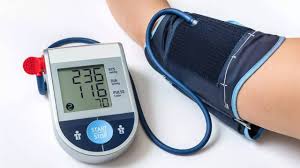NEW DELHI, May 17:
Hypertension is a driving force in the global epidemic of Non-Communicable Diseases (NCDs) and the leading risk factor for death and disability globally, said WHO Regional Director for South-East Asia, Saima Wazed on Friday.
It is estimated that more than 294 million people are living with hypertension in the Southeast Asia Region, Wazed said.
On World Hypertension Day, Wazed said that efforts to prevent and control hypertension need to be strengthened to meet global and national targets. It should be an integral part of every nation’s journey towards Universal Health Coverage.
This year, the theme is a call to ‘Measure Your Blood Pressure Accurately, Control It, Live Longer.’
High intake of salt, tobacco and alcohol, unhealthy diets, physical inactivity, stress, and air pollution are key risk factors for the rising prevalence of hypertension, she stated.
“Early detection and control are crucial. Among adults with hypertension, half of them are unaware that they have it. Nearly one person in six does not have their blood pressure under control. If uncontrolled, it can lead to heart attacks, strokes, kidney failure, and early death.”
“Limited access to affordable healthcare services for hypertension is one of the prime reasons for the low Universal Service Coverage Index for most countries in our region and impacts access to quality health services,” she said.
The South-East Asia Region has identified the prevention and control of hypertension as one of the priorities. The Seventy-sixth Regional Committee in 2022 endorsed the initiative, SEAHEARTS: Accelerating Prevention and Control of Cardiovascular Diseases in the South-East Asia Region.
This can be considered the world’s largest expansion of cardiovascular disease prevention and control in primary health care. The “Dhaka Call to Action” which accelerates the control of cardiovascular diseases in a quarter of the world’s population, guides how to achieve the SEAHEARTS milestone of placing 100 million people with hypertension and diabetes on protocol-based management by 2025.
Countries across the region are implementing evidence-based strategies to mitigate the associated risk factors. Encouragingly, trends indicate a decline in tobacco use and exposure to household air pollution, she said.
Notably, four countries have initiated measures to eliminate trans-fatty acids from their national food supply chains while two countries have implemented standards for labelling and marketing to provide consumers with the information needed to make healthier dietary choices, Wazed said.
Several countries have established national targets to improve hypertension and diabetes management within primary healthcare settings. These efforts involve revising evidence-based clinical protocols to align with the WHO HEARTS technical package, introducing team-based care approaches, and enhancing the availability and accessibility of essential medicines and equipment.
Over 24 million individuals with hypertension are estimated to be on treatment within public health facilities across the region, Wazed noted.
“Nonetheless, efforts to prevent and control hypertension need to be further strengthened to meet global and national targets, including those outlined in the Sustainable Development Goals (SDG) and SEAHEARTS milestones,” she stressed.
Stating that the region advocates for action in five key areas, Wazed said that firstly there has to be a focus on reducing hypertension risk factors by implementing WHO Technical packages for tobacco control, salt reduction, elimination of trans-fatty acids, promoting physical activity, and reducing air pollution.
Secondly, it calls for accelerating the coverage and management of hypertension within primary healthcare by strengthening interventions outlined in the WHO HEARTS and WHO Package of Essential Noncommunicable Disease interventions.
Third, it calls for establishing and regularly monitoring national targets and indicators for hypertension, to enhance accountability and track progress towards SEAHEARTS milestones.
Fourth, the convergence of hypertension prevention and management services with other national programs, including maternal and child health, tuberculosis, and HIV programs is being ensured.
Fifth, the communities and individuals need to be empowered for self-care management of hypertension, incorporating measures such as low sodium diets, reducing tobacco and alcohol use, regular physical activity, and conducting periodic blood pressure assessments.
“Improving hypertension prevention and control can not only potentially save countless lives, it also carries significant economic advantages and advances progress towards SDG targets,” she said. (Agencies)
Trending Now
E-Paper


